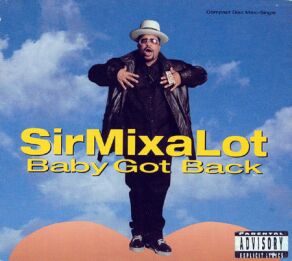I learned about the work of brilliant activist-scholar,
Jaskiran Dhillon, at the Human Rights symposium in St. Louis October 11-12,
2017, the subject of my last blog post. Dhillon is an assistant professor
of Global Studies and Anthropology at the New School, and is from a tiny town
in Treaty Six Cree Territory, Saskatchewan. Raised by politicized parents, she quickly
became involved in decolonial activism, and does this work across the globe, particularly
in Canada and Burma and, recently, in solidarity with Standing Rock. Author of Prairie Rising: Indigenous Youth, Decolonization, and the Politics of Intervention, Dhillon gave a plenary talk at the Human Rights
symposium that developed an anti-colonial critique of environmental
justice.
A couple of random highlights:
·
Voicing a position I have a hard time conveying
to my environmentalist students, Dhillon is suspicious of the new craze to
integrate Traditional Ecological Knowledge (TEK) into Climate Change science
and policy. She reminded me that TEK is
not a knowledge “resource,” as the language in the documents of federal
agencies describes it, but rather an action word—it’s something that people do, not know. The language of TEK as
“resource” sets up TEK to be yet another thing to colonize for the purposes of
settler-culture’s desire to adapt and survive climate change. The “discovery” of the value of TEK on the
heels of centuries of assimilation and oppression attests to the fact that settler
culture only cares about indigenous ways when it suits their own agendas. The potential for abuses of TEK and the
communities that embody it—in the name of dominant white cultures battling or
surviving climate change, while indigenous communities continue to bear the
brunt of extraction politics—are high.
Dhillon asks, “whose interests are served when TEK is extracted in
service of climate recovery?”, and says the problem is that the appropriation
of TEK to protect “all of us” is not linked to the broader goals of indigenous
sovereignty or dismantling settler colonialism.
·
Environmental justice (EJ) isn’t a useful term
for indigenous movements, in part because it identifies the first race-based
environmental abuses in the 1970s, with Love Canal and as documented by Robert
Bullard’s Dumping in Dixie. The origin
story of EJ in the US ties it to the Civil Rights movement, whereas indigenous
communities have been experiencing race-based environmental exploitation “since
1492.” Also, for indigenous communities,
colonization is above all an act of environmental violence. If we historicize
the 1970s as the birth of EJ, we yet again erase indigenous history in the U.S.
Alternatively, maybe EJ is just something else—not just a way to describe links
between racial injustice and environmental degradation. I think Dhillon might argue that settler
colonialism’s own forms of environmental degradation ought to be described as
its own thing. But it’s still really helpful for her to have pointed out the
need for a more specific, precise definition of EJ so that colonialism isn’t
ignored, yet again, and so that we can understand the nuances between different forms of racial injustice and their often
quite different relationships to environmental degradation. Another way of approaching it, she says, is
to consider decolonization as a foundation to EJ.
·
Dhillon also made the brilliant point that
climate change and settler colonialism are linked. This may feel like a “no-duh” insight to
those who study or live TEK, but this insight is really important as a
follow-up to the above point: dominant environmental discourse often posits
that industrialization (e.g. Leo Marx, Al Gore) or capitalism (e.g. Naomi
Klein) are the root causes of climate change.
An anti-colonial critique of this narrative points out that colonialism
paved the way for these later developments, and that ongoing colonial
relationships enable these other phenomena to thrive. Overthrowing capitalism or getting
post-fossil-fuel won’t address the root problem. Dhillon says that blaming capitalism is “a
red herring.” As such, a person can be
fighting for fixing climate change and also be very much against indigenous
sovereignty. To take it further, I would
add that this is precisely the kind of internal contradiction within the
mainstream environmental movement that often assumes its “saving” of the planet
will lead to social justice.
·
Dhillon also writes about, but did not develop
so much in the talk due to time limits, the links between NODAPL and police
state violence, indigenous education policies, “man camps”, sex trafficking, and
myriad other forms of cultural, physical, and sexual violence. As she says, “NODAPL isn’t about a pipeline;
it’s a fight for the co-existence of life.”
In the Q&A, Dhillon received a
final question from an older white woman, who asked, voice quivering and nearly
on the edge of tears: “I love my house.” Long pause. “What are we supposed to do?”
I just about combusted in my seat, and wondered
how Jaskiran would handle this. She was
a master class in difficult dialogue. I
wish I could relay precisely what she said, but basically, she firmly but calmly
said, “that’s not my problem. Find
resources about how to work through your white guilt, find friends going
through the same thing, and figure it out.
Start to see all the privileges you inherited so that you could have
your house; this work is hard.” She was
firm about not coddling the white woman’s newfound epiphany of her complicity
in colonialism, but did not punish her for asking the question. I asked Jaskiran what she thought of that
exchange, and I was really impressed that she welcomed the question and commended
the woman for saying what so many people think, but fear saying.
I’m still mulling over all that
happened at that conference, but certainly Dhillon’s talk and her Q&A
taught me so much about the messiness of the relationships between the climate
movement and decolonization, and between EJ and indigenous rights.








